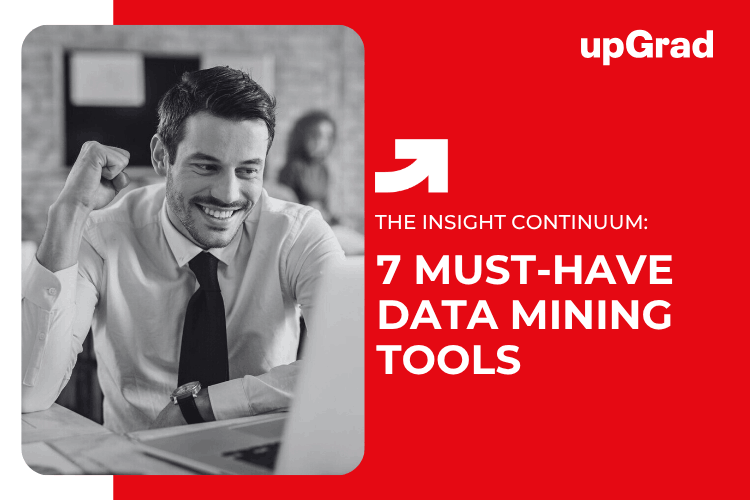Data mining involves extracting and recognizing patterns in large datasets. Businesses use the data mining process to draw insights and make valuable decisions. Using data mining tools helps with the execution of different data mining techniques. Dive deeper to learn about the top 7 data mining tools necessary for every business.
Python
Python is the easiest and most straightforward language to perform data visualization in Python. Only basic programming concepts like data types, variables, conditionals, functions, and loops are necessary to perform data visualization using Python. Moreover, Python comes with different libraries like Pandas and NumPy to apply machine learning algorithms and perform statistical analysis.
RapidMiner
It is a predictive analytic tool operating on the Java programming language. RapidMiner combines text mining, deep learning, and predictive analysis in a single platform. The tool follows a client/server approach and uses template-based frameworks for faster delivery.
Oracle Data Mining
Oracle supports data mining for business analytics by eliminating the need for extracting and transporting data. The comprehensive approach of the tool helps with easy management and identification of data, patterns, insights, and trends.
Teradata
Teradata enables you to use different tools and languages at scale across multiple data types. By embedding analytics near the data, this tool guarantees faster and more accurate analysis of large datasets.
KNIME
KNIME is a free, open-source tool for classification in data mining. It integrates machine learning and data mining components to help create workflows. The simple, easy-to-use drag-and-drop graphical interface of the tool is ideal for visual programming. Users can perform in-depth statistical analysis and create workflows for data analysis using this tool without any technical expertise.
SAS Enterprise Miner
The tool is highly valuable for data analytics and management. SAS helps with mining data, changing it, and managing information from multiple sources. The graphical UI of the data mining tool also helps non-technical users with statistical analysis. This tool’s highly scalable memory processing architecture is one of its special features.
MonkeyLearn
This user-friendly data mining software is valuable for acquiring high-quality information from text. Detecting topics, extracting keywords, and analyzing human intent and sentiments are primary activities using MonkeyLearn. The tool is often integrated with social media platforms to identify negative feedback.
Ending Note
The market for data mining tools is expected to reach $2400 million by 2030. Becoming familiar with the top data mining tools in the industry will only contribute toward the success of your business. So, learn about them today!
FAQs:
Q.1 How can I find the best data mining tool?
You must consider the purpose while finding the best data mining tool. You must find a data mining tool with suitable features depending on your use case.
Q.2 Which is the easiest data mining tool?
Python and RapidMiner are two of the easiest data mining tools.
Q.3 Which industries use data mining tools?
Data mining tools are used in various industries, including insurance, banking, retail, and education. The telecom, media, and technology industry also uses data mining tools.








